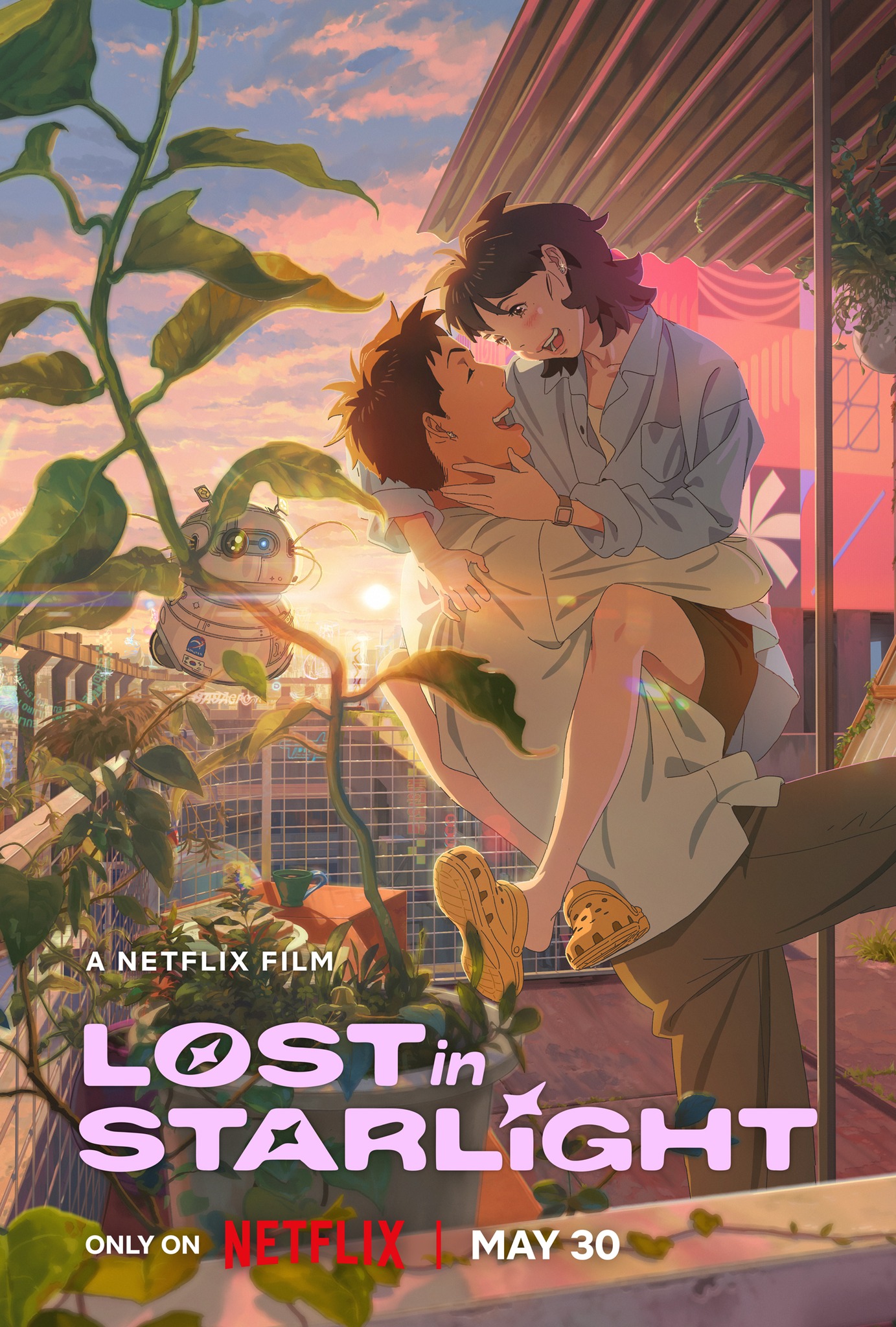
Lost in Starlight (이 별에 필요한)
Written by Kang Hyun-joo and Han Ji-won | Directed by Han Ji-won
Developed by Climax Studios | Distributed by Netflix
Some stories don’t arrive with grand revelations. Instead, they cradle truths we’ve always carried—softly, tenderly—reminding us that time is fleeting, connection fragile, and memory a shimmering, elusive thing. Even across vast distances, the heart persists, reaching out with quiet insistence.
Lost in Starlight, directed by Han Ji-won and co-written with Kang Hyun-joo, is one such story. Netflix’s first original Korean animated feature unfolds more like a meditation than a spectacle—delicate, deliberate, and bathed in visual luminescence. It’s a gentle exploration of longing, love, and the ache of separation—both physical and emotional—that lingers in the quiet spaces between us.
The film’s visuals captivated me, inviting a closer look to unpack their subtle charm. It’s steeped in 1970s retrofuturism—a nostalgic vision of tomorrow where analog warmth meets bold imagination. Think hand-drawn star charts and softly glowing consoles, their quirks a welcome contrast to today’s obsession with sleek perfection. In one scene, a spinning victrola transported me back to the living room with my father, listening to opera. That moment stayed with me, like a song you can’t quite stop humming. The style isn’t just aesthetic—it’s a tactile expression of memory and curiosity, linking past and future. It’s human, imperfect, and quietly enduring.
The film doesn’t merely dream of what’s to come—it gently questions it. It traces the tension between inherited hope and the shifting contours of lived reality. Han Ji-won’s directorial touch resists spectacle, favouring instead the intimacy of atmosphere—silences that speak, glances that carry unspoken weight. Each frame feels composed with a painter’s care, allowing emotion to surface gradually within stillness. This kind of restraint aligns with her emerging voice—one that honours introspection over exposition, patience over urgency. In a world of relentless noise, that quietude feels radical. It invites us to pause. To feel. To simply be.
Lost in Starlight also shines in its spirit of collaboration. The director invited lead actors Kim Tae-ri and Hong Kyung into the creative process early on, encouraging them to shape their characters beyond the storyboard. I’ve long admired Kim Tae-ri’s range, and her chemistry with Hong Kyung—particularly after their haunting collaboration in Revenant—brings a lived-in authenticity to their dynamic. Their improvisations infuse the dialogue with lifelike emotion; here, even a pause or softened word carries profound weight, transforming quiet exchanges into something deeply resonant.
The production design mirrors this same restraint. Instead of imagining a skyline of distant futures, Han reimagines present-day Seoul—familiar streets softened by subtle, speculative touches. It’s an intimate vision of progress, suggesting that not everything must change beyond recognition.
Ultimately, Lost in Starlight—or What This Star Needs, its original Korean title—doesn’t chase innovation for its own sake, though its craftsmanship hums with quiet brilliance. It offers something rarer: a space to reflect, to remember, to feel. It’s a story that holds you gently, whispering that even in the vast unknown, the heart knows its way.
What moments lingered with you after watching? I’d love to hear how this story touched you.
Image courtesy of Netflix
Comments are closed.